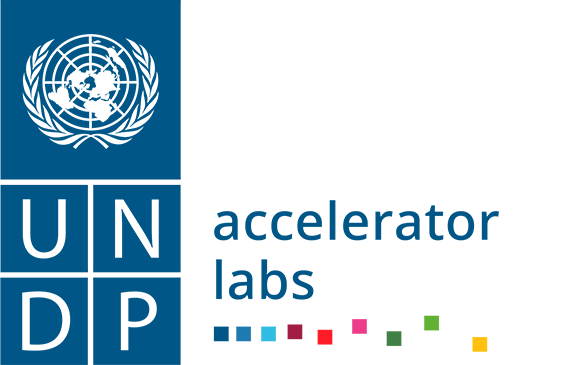–>
Digital community entrepreneurs providing information, customer service, and hardware to enable financial services
What it does. The digital community entrepreneur (DCE) model allows financial service providers to go deeper into rural markets and service communities with formal financial services.
Data shows that users of mobile money services rely on their close network or agents to use these services. Being at ease with services on mobile phones or other digital means takes time and requires a mix of things ranging from awareness to education, repeated use, and positive outcomes.
The DCE model facilitates each of these aspects by providing basic information on services, support to register and use the service as well as access to basics like SIM cards, handsets, charging stations or products that can be paid via mobile money accounts (pay as you go solar products).
Community members who become DCEs provide the support and infrastructure needed to use digital financial services.
Value proposition for the government/other partner. The model is designed to work with and for private sector actors such as financial service providers and fintechs expanding their services in remote rural areas. It works on the principle that the adoption of new technologies is a deliberate process that must be driven by trusted members within the community.
Deployed at the last mile, DCEs complement financial service providers’ sales and marketing efforts to onboard and educate customers about digital financial services while also serving as a distribution team for mobile handsets, SIM cards and solar products for charging phones.
The model encourages the providers or fintechs to recruit and train the DCEs to become the gateway to digital financial and non-financial services.
Why and when to use it. The model is very efficient when looking at deploying digital financial and non-financial services to remote communities that are new to such technologies and require a holistic onboarding model that includes a hands-on approach and support available within the community in the long run.
Known issues and troubleshooting. To effectively implement this approach, the following is required: (i) Organizational commitment to gender equity at all levels, from senior management to operational teams, (ii) gender analysis to identify gaps, needs and specific opportunities within the Fintech sector and among potential users, (iii) gender capacity building for the staff of the vertical, ensuring that they understand and can implement inclusive practices and (iv) collaboration with stakeholders including women’s organizations, gender experts and regulators to design and implement effective solutions.
The DCE model works well if the following conditions are in place:
• Connectivity and phone ownership among users. • Relationships with farmers associations, VSLAs, youth groups, mobile phone suppliers, etc. • Providers of financial services and fintech in the markets with services and products that are fit for smallholder farmers (i.e. that match the cycle of production or agriculture seasons).
Context. To bridge the digital finance divide, UNCDF in Uganda has been driving digital financial inclusion with a focus on agriculture value chains since 2015. UNCDF works with private sector players to drive digital financial products and services in the hard-to-reach areas in Uganda, providing both technical assistance and grants to de-risk innovative projects. Mobile technologies hold an immense potential to accelerate access to services, notably financial services, which drive rural communities’ economic development. In Sub-Saharan Africa, 55% of the adult population holds an account with a financial institution or mobile money provider. The growing number of mobile money accounts also comes with potentially increased access to other services like access to high-quality inputs for agriculture (seeds and tools), information on techniques, weather information, etc.
Digital financial service providers, just like other private sector players are open for business and partnerships that are built on a strong business case. The latter is not always evident or guaranteed when it comes to reaching the last mile, which explains the reluctance of partners to reach these markets.
In forging these partnerships to be able to serve the last mile, UNCDF had to create solutions that can demonstrate to the financial services providers (FSPs): (1) that there is a potential market to tap into, (2) that this market can be profitable if served appropriately.
With these objectives in mind the UNCDF conceived a first model in 2015 called the Booster Team, that was upgraded based on the lessons learned in 2019 to become the digital community entrepreneur model.
Cost. A pilot project of the DCE model implemented by UNCDF’s partner Ensibuuko in Northern Uganda from 2019 to 2021 cost a total of US$ 405,409, with UNCDF contributing US$ 204,981 and Ensibuuko US$ 200,428. Through this project, 361 DCEs were recruited and reached 245,000 people with digital and financial literacy training, and digital tools.
People. Project Managers are responsible for overseeing the comprehensive planning, execution, and monitoring of the project document to ensure its successful implementation. They provide technical assistance to the implementing partner and facilitate discussions and engagements with pertinent stakeholders, including financial institutions, mobile network operators, and development institutions like the development bank, streamlining the coordination process.
Focal point. Richard Ndahiro
Country, year, and language. Uganda, 2022-2023, English.
Resources. • Concept note about the DEC model • TOR for the TA • Training toolkit (ToT and trainee) Report. Read this report to understand the impact that the Digital Community Entrepreneur model has had in facilitating last mile distribution of digital financial products and services as well as improving the livelihoods of women and youth, who are driving this innovation. It also explains how the model operates and enumerates challenges and opportunities for scalingup such a model.
